MARIANI’S
Virtual
Gourmet
February
28, 2021
NEWSLETTER
F NEWSLETTER
IN THIS ISSUE
WHAT'S NEW IN LAS VEGAS
By John A. Curtas
NEW YORK CORNER
LOVE AND PIZZA
Chapter Forty-Nine
By John Mariani
NOTES FROM THE WINE CELLAR
THE
WINES OF SEREGO ALIGHIERI
By Geoff Kalish
❖❖❖
On the next video episode of Celebrating Act 2 on January 6, I will be speaking with hosts John Coleman and Art Kirsch about the origins and types of PIZZA. Go to: CA2
By John A. Curtas
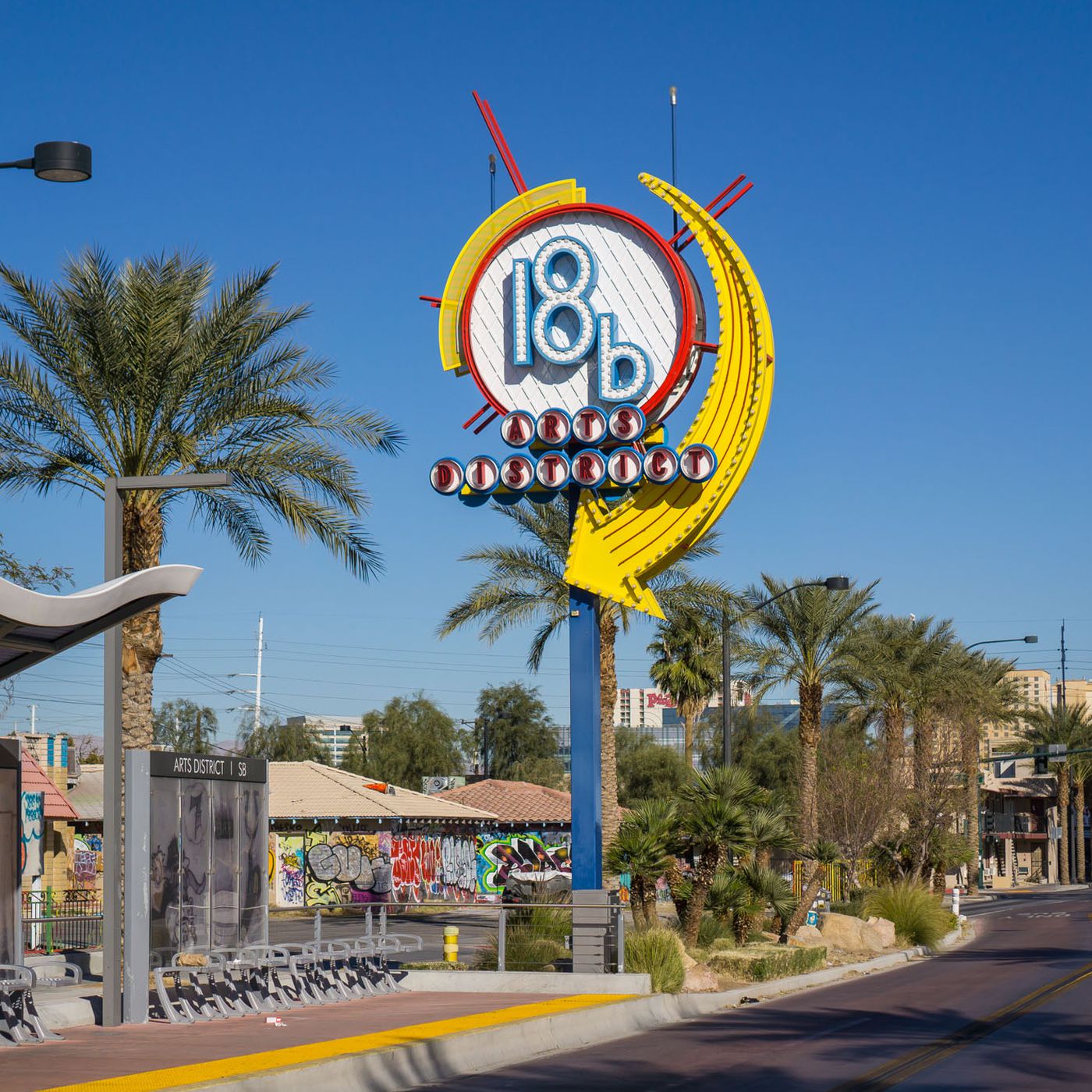
What's
new on our restaurant scene?
Quite a lot, actually.
No other city in America can say the same,
but Las Vegas, as you know, is no ordinary city.
We are the quintessential tourist town, with huge
rumbling, cacophonous casino/hotels bestriding our
economy like so many Brobdingnagian towers—casting
long shadows, quaking the earth, dominating the
gastronomic landscape. Until now.
More so than any other city in America, our
main economic engine is moribund, comatose, on
life support. Visitation numbers fell off a cliff
in 2020, down to 19 million souls from a 2019 high
of 42.5 million. And those vacationing here are
not the free-wheeling, high-spending
conventioneers, whooping it up on someone else's
dime. No, these are the bargain hunters, the
coupon-clippers, the escapees from California
looking for something fun to do on the cheap.
During the week, casinos are deader than Moe
Dalitz. Even on weekends, the big hotels can feel
like ghost towns. Shows are closed, shops are
empty, and eatery options have been eviscerated.
Sounds
depressing, doesn't it? Well, it is and it isn't.
Because it is there—on
the Strip—but it isn't here— in
the
actual town where 2.3 million Las Vegans live. It seems
the Strip's loss has been the neighborhoods' gain.
New restaurants on Las Vegas Boulevard South might
be harder to find than toilet paper in a pandemic,
but the local scene is flat-out jumping. Downtown
is leading the way, with a spanking new hotel,
Circa, which opened late last year—the first new
one on Fremont Street since 1980. It boasts five
excellent restaurants, and seems to be busier
every weekend.
A
mile to the south, in the Arts District on Main
Street (above), new joints are popping up
like porcinis after a downpour. Can any other town
in America say this? Pretty doubtful. New York and
California—the epicenters of American
food/restaurant culture—are doing their best to
crush the life out of the restaurant industry.
Thankfully, little old Las Vegas has kept the
foodie flame burning, albeit at bare BTU levels.
But at least we're open, and feeding people, and
human beings are socializing and breaking bread
together all over town, like homo sapiens were
meant to.
While it might
take the giant hotels another year to start
humming again, locally, Las Vegas appears to be
entering a new age of local dining—a resurgence
led by a neighborhood that didn't even exist four
years ago, but now is the one everyone is
talking about.
100 E. California Ave.
702-473-7200
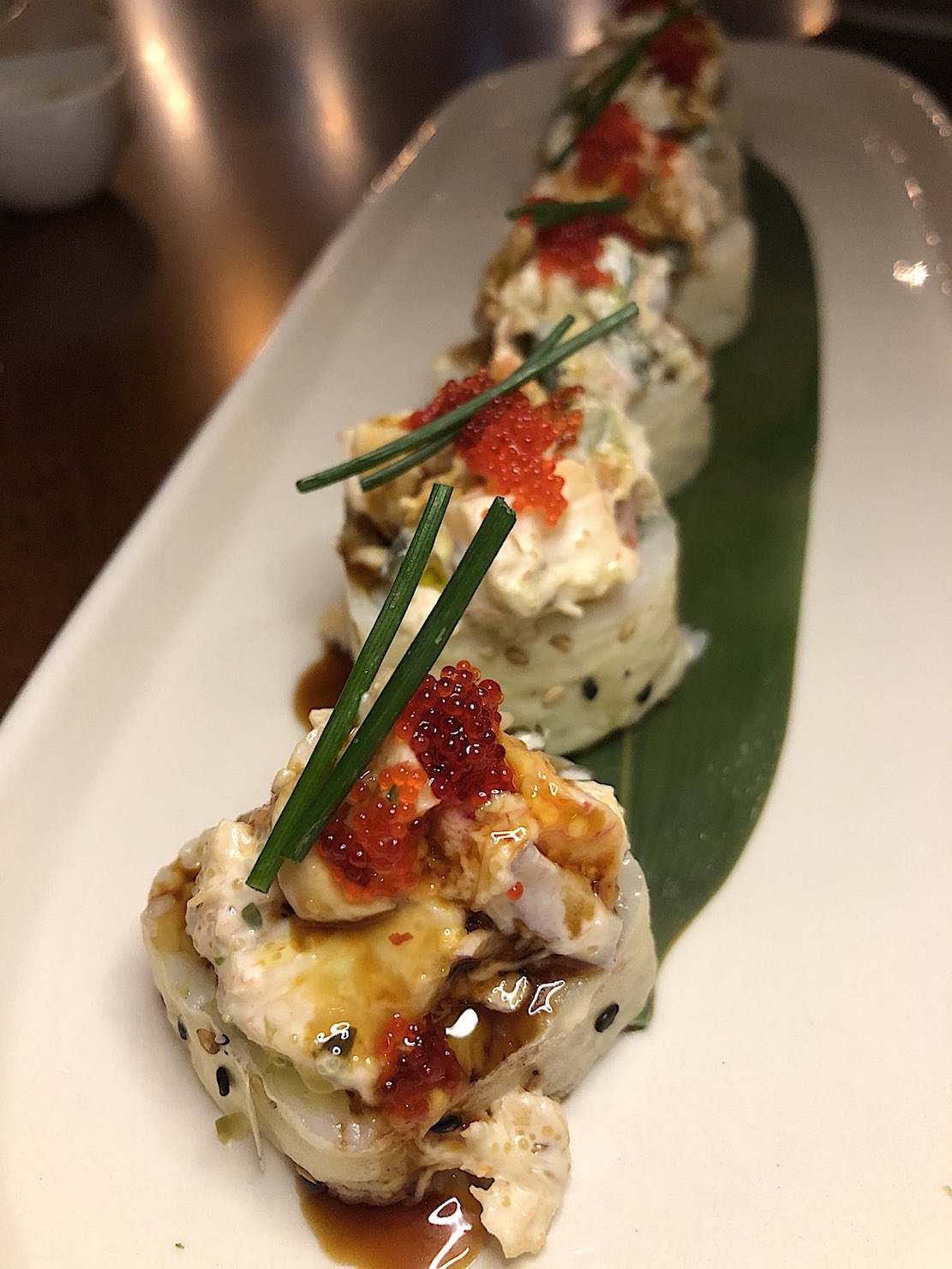
The Arts
District in downtown Las Vegas is fast becoming
one of the coolest neighborhoods in America. While
it still has a ways to go residentially, food-wise
the options are expanding geometrically. A
micro-climate of good eats has sprung to life on
South Main Street, boasting a dozen bars, four
brewpubs, and three new restaurants within a block
of each other. Each is much better than it has any
right to be.
Yu-Or-Mi
(the name comes from a Jackie Chan movie) exists
around the corner from Good Pie and Main Street
Provisions, a half-block from a wine bar, and in a
world of its own when it comes to Japanese-fusion
food. All the usual suspects are there, but it's
in the small plates and sushi rolls where the
kitchen puts out an array of appetizers that show
a hand both refined and restrained, and beautiful
to boot.
Everyone
does crispy Brussels sprouts these days, but the
sweet-sour kurozu reduction on
these keeps you reflexively reaching for another
bite. Other standards like yakiniku ("grilled")
beef gyoza,
rock shrimp tempura,
tuna takaki,
and chicken karaage rise above the
cliches to remind you why they became famous in
the first place.
The Yu So shellfish roll bundles lobster
tempura with lobster salad in bite-sized packages
of tofu skin which announce textural, salty-sweet
seafood contrasts with every bite. The purist in
me is horrified, but I can live with cutesy names
like "Oh Snap" when the Japanese red snapper is
this fresh, and the ginger-chili ponzu this
bracing.
Even non-ramen fans will have to admire the
broth—as rich as any you'll find in
Chinatown/Spring Mountain Road—and the yakisoba noodles
and garlic fried rice reveal both subtlety and amplitude,
no mean feat.
All of these are conceived and executed
by Virakone
Vongphachanh (he goes by "V" out of
sympathy for us non-Southeast Asians)—a chef whose
Laotian roots belie an inspired Japanese cook by
temperament. The sake list is not one you can get
lost in, but the small selection is well-chosen
and well-priced, and, for our yen, the only thing
to drink with this food.
What YOM is
doing is straddling a line between high-toned raw
fish and crowd-pleasing concoctions—compelling
creations that do its Nobu ancestry proud.
Shopping mall sushi this is not. But the prices
are fair and the setting is cozy and the downtown
crowd has taken to it like barnacles to a boat.
Dinner for two will
run around $80, without alcohol. Appetizers run
$8-$20; Sushi/Sashimi is priced by the piece
between $6-$15; Specialty Rolls are $13-$18;
Omakase sushi menus run $40-$55, with more than
enough for 2; Rice and noodle dishes are in the
mid-teens.
GOOD PIE
1212 S. Main Street
702-844-2700
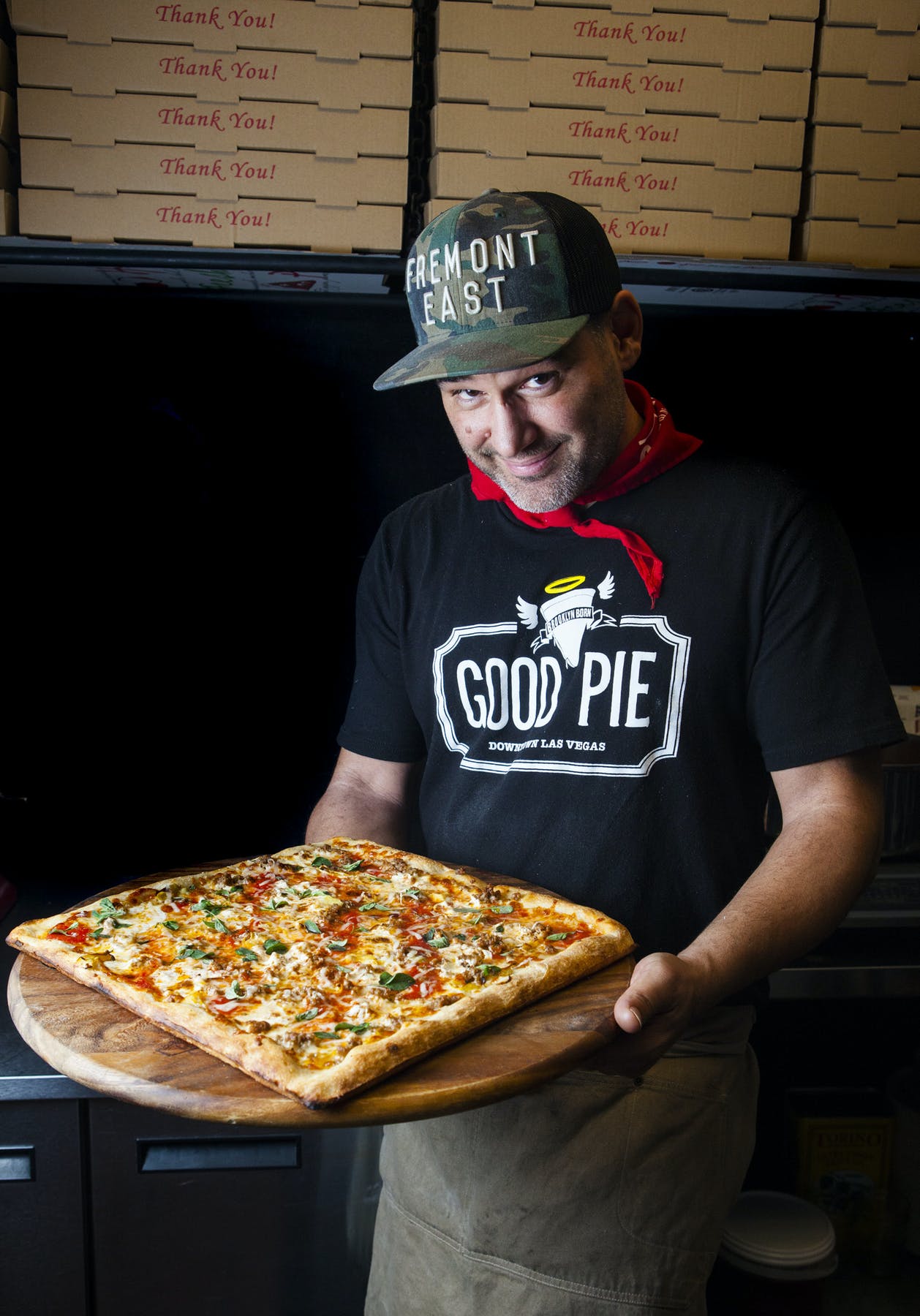
Like
its neighbor Main Street Provisions, Good Pie
opened late last year, when starting a restaurant
was dicier than drawing to an inside straight. It
survived serving pizzas to-go and by-the-slice,
and with a recent opening of both inside and
outdoor tables, chef/owner Vincent
Rotolo is poised to re-set Las Vegas's pizza
paradigm.
Rotolo is a classicist in the vein of every
family-run Italian joint up and down the East
Coast pizza belt. The dark bar, white tile and
comfy booths (along with the "Grandma Wall" of
family pictures), puts you in mind of the type of
place where you'll hear, "Ma, who gets the scungilli?" or Faackin'
Yankees did it to us again" over the thrum of
dough being slung.
And what dough it is. Quality flour,
long-fermented, in a variety of styles; one bite
tells you you're in the midst of a higher-level of
deck oven craftsmanship. The doughier, rectangular
(Sicilian, Detroit) crusts have the complexity of
great bread, while the thinner Brooklyn, and
"Grandma" styles, display the crackle and char of
their big-city forebears.
Ingredients matter is the mantra, and from
those crusts to the olive oil to the house-made
tomato sauce to the ricotta and toppings,
everything hits home. To my mind, there are
almost too many choices, and the dizzying menu
array can sometimes make ordering feel like a
jigsaw puzzle. But amazingly, the pieces always
fit no matter how you arrange them.
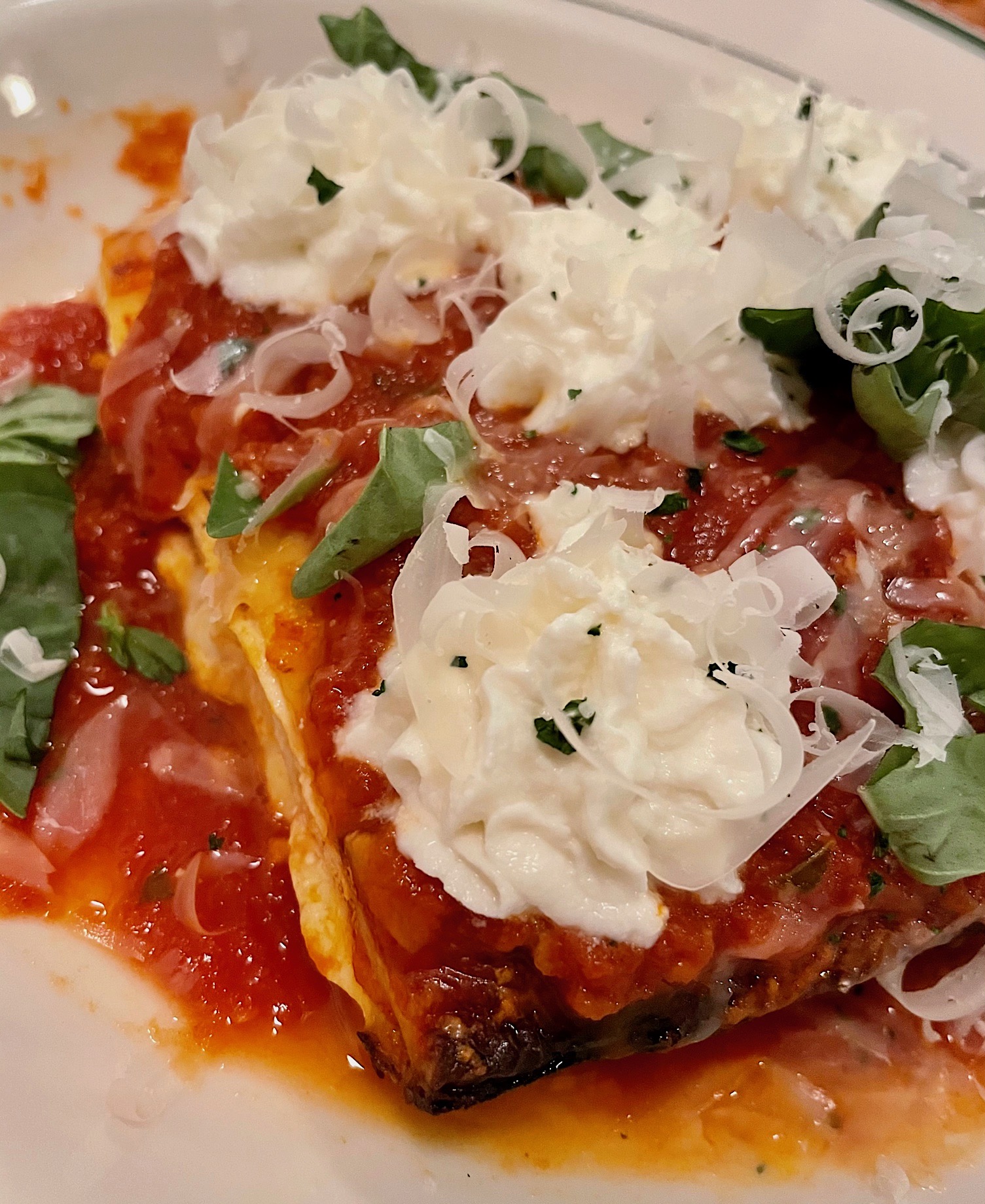 Beginners
should tuck into a simple "Grandma" square, or
Brooklyn round to acquaint themselves with the
Good Pie oeuvre, while fressers should throw
caution to the wind with a spongy Sicilian the
size of a small desk, a Detroit caramelized cheese
crust carb-fest, or a "Quality Meat" 3-protein
lollapalooza. They also offer something
called "Mike's Hot Honey" to dribble on your pies,
and, also amazingly, this little sweet-hot
condiment adds quite the pleasant kick to counter
the queso overload.
Beginners
should tuck into a simple "Grandma" square, or
Brooklyn round to acquaint themselves with the
Good Pie oeuvre, while fressers should throw
caution to the wind with a spongy Sicilian the
size of a small desk, a Detroit caramelized cheese
crust carb-fest, or a "Quality Meat" 3-protein
lollapalooza. They also offer something
called "Mike's Hot Honey" to dribble on your pies,
and, also amazingly, this little sweet-hot
condiment adds quite the pleasant kick to counter
the queso overload.
Those
not in a pizza mood will be happy with
Italian-American standards like chicken parm,
"Sunday lasagna" (left), garlic knots,
superb fried ravioli, great meatballs, and a
decent Caesar salad. I'm no fan of gluten-free
pizza, but if you insist on eating yours on top of
cardboard, Rotolo's are probably the best in town.
Can a new
school/old school pizzeria, which looks like it
belongs on Wooster Street in New Haven, and acts
like a modern restaurant (complete with upscale
cocktail bar), come out of this pandemic smelling
like a tomato rose? The crowds seem to be saying
that it can. Pent-up demand for great pizza is
real. Long may Good Pie's red sauce flag fly!
Prices start in the
high teens to $34 for the Grandma Supreme, but
the round pies come in small and large
($14-$24), and the big rectangular boys
($24-$30) will satisfy 6 hungry adults. Entrees
are in the $15-$20 range.
MAIN STREET
PROVISIONS
1214 S. Main Street
702-457-0111
You can throw
three stones and hit all three restaurants
mentioned here. All were on the drawing board, and
 scheduled
to
open downtown in mid-2020. Covid put an expensive
dent in everyone's plans, and none more so than
Main Street Provisions. Owner Kim Owens and
Executive Chef Justin Kingsley
Hall spent the entire year cooling their
heels until finally, in early December, the doors
swung open, to 25% maximum capacity.
scheduled
to
open downtown in mid-2020. Covid put an expensive
dent in everyone's plans, and none more so than
Main Street Provisions. Owner Kim Owens and
Executive Chef Justin Kingsley
Hall spent the entire year cooling their
heels until finally, in early December, the doors
swung open, to 25% maximum capacity.
Putting
the best face forward that she could, Owens has
said that the restrictions allowed her to dispense
with the usual friends-and-family shakedown
cruise, and let her staff get used to customers
without dealing with overload, at either the front
or back of the house. Now that things are starting
to relax, the neighborhood is crawling with hungry
tummies, and they'll have to get used to being in
the weeds.
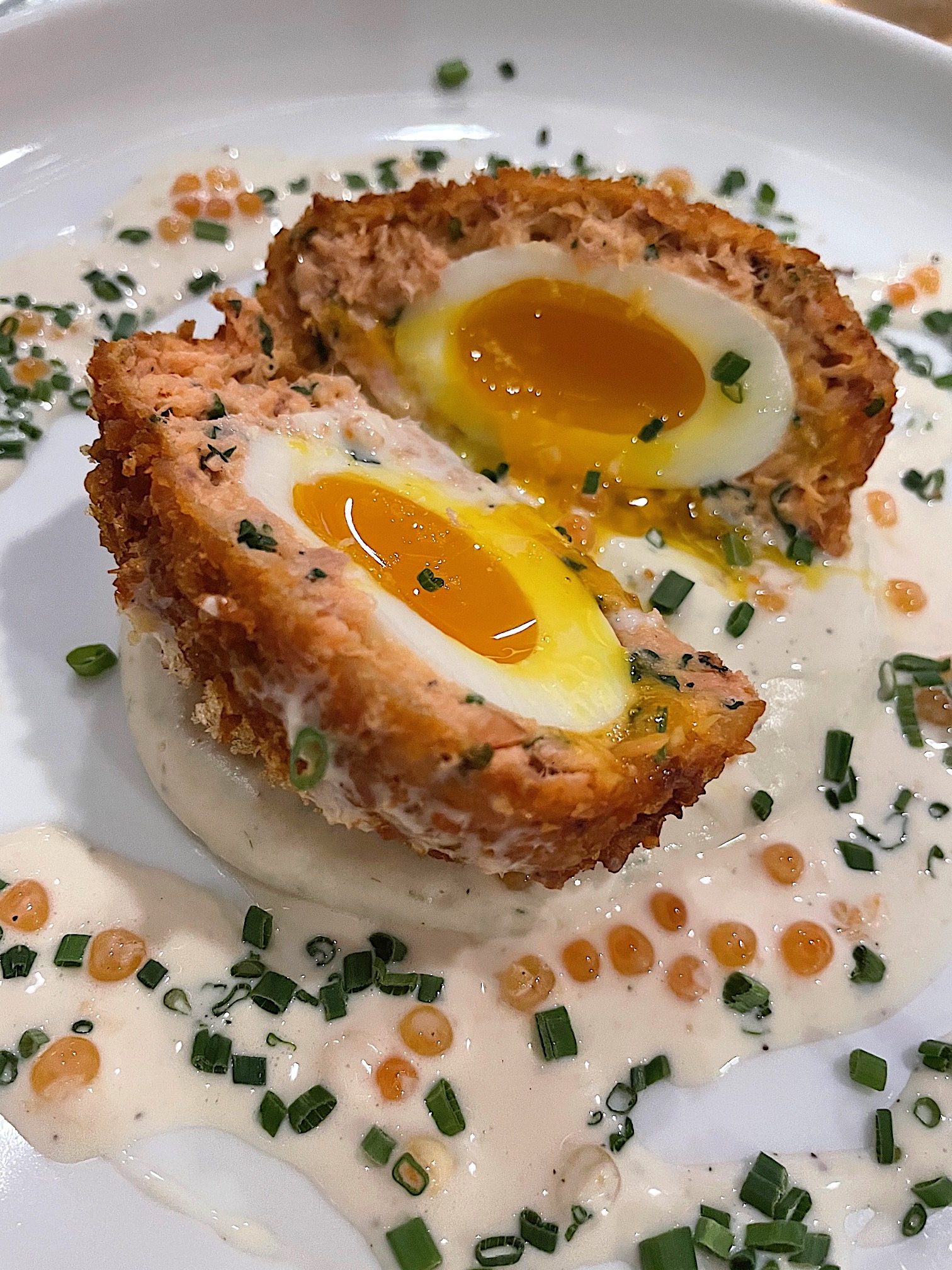 Hall's menu can best be described as smokey
and southern—as in Utah and the Deep South—and
gutsy. Frou frou bistro food this is not.
Hall's menu can best be described as smokey
and southern—as in Utah and the Deep South—and
gutsy. Frou frou bistro food this is not.
Right off the bat the Scotch Egg will catch
your eye—soft boiled and wrapped with smoked
Riverence trout crusted with potato chips, sitting
in a shallow pool of lemon cream. Nothing says
"don't try this at home" like a smoked trout
Scotch egg in verbena cream, and it takes a chef
with Hall's chops to pull it off—cloaking a
prosaic egg in a sophisticated wrap which enhances
them both.
Beyond that, you'll find a unique butcher
plate of smoked meats, pates and rillettes made in-house,
accompanied by fry bread that is pretty much the
last word in Native American carbohydrates. The
same bread sits alongside an 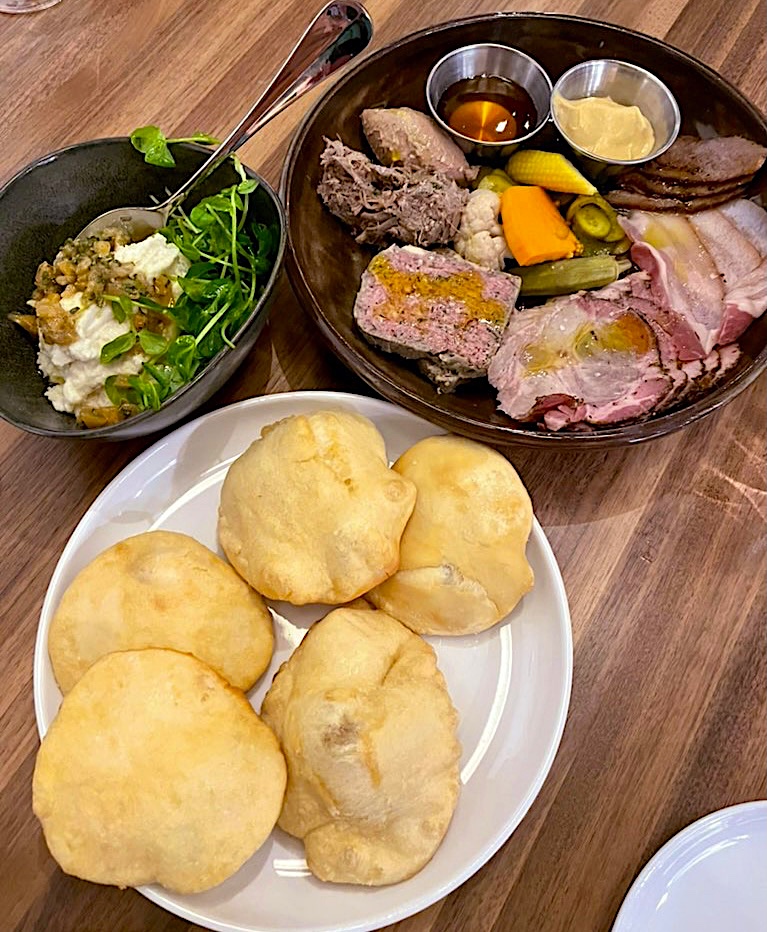 herb-flecked
hominy hummus studded with preserved lemon, which
turns something with usually all the interest of
drywall Spackle into a compelling starter.
herb-flecked
hominy hummus studded with preserved lemon, which
turns something with usually all the interest of
drywall Spackle into a compelling starter.
I
wish I could celebrate the use of barely-seared
venison in a tataki of
whiskey-shoyu dressing, but the venison doesn't
come through and the whole dish feels like the
chef is trying too hard. Likewise, the deep-fried,
breaded Sole Kiev (wrapped around herb butter)
feels forced and out-of-place on a menu brimming
with interesting edibles.
Once you get past those misses the hits
abound: rosy red Heritage Ham Steak blanketed with
a sour-sweet pepper-tomato sauce, charcoal roasted
quail gumbo with smoked andouille sausage
stuffing, a serious New York strip dubbed "Utah
Woman's Steak" (after Hall's wife) that comes with
a one-two punch of aggressive, charred scallion
chimichurri sauce and a soothing "funeral potato"
croquette.
The burger is good, if a bit overloaded
(with pickles, smoked cheddar and fried onions),
but all sins are forgiven once the poached rabbit
sausage ("Rabbit Boudin") with potato dumplings
shows up (left). It is flat-out great, and
by all accounts is becoming the restaurant's
signature dish.
Any restaurant bold enough to serve rabbit
sausage, quail, hominy, and ham steaks is clearly
trying to set a trend, not follow one, and the
feeling one gets is of a chef who is cooking the
kind of food with which he and his friends like to
impress each other—gussied-up for restaurant
customers, of course, but substantial,
rib-sticking stuff done with a chef's flair and an
eye for detail. It may not be the lightest meal
you'll ever have, but it will be one of the most
original, and there is no more interesting cooking
going on right now in Las Vegas.
Whenever something threatens to feel a tad
overwrought (the fish, that venison), Hall pulls
you back to the simple reality of exquisite
ingredients being allowed to shine, as with his
harissa carrots (roasted, of course), oat milk
grits, cattlemen's BBQ pea beans, and Louisiana
popcorn rice (served plain or with schmaltz).
These side dishes are frame-worthy on the menu
(and would make a great meal all their own). The
one salad we tried—For Ernie's Birds—was a
tantalizing tumble of local greens and seeds,
dressed just-right in an herbaceous chimichurri vinaigrette.
Desserts
are few in number but pack a wallop, especially
the butter cake—another homage to the caloric
glories of the South.
Like
its neighbors, MSP has feng shui in spades. It is
long and narrow with a welcoming bar to one side,
and colorful, comfortable seating pointing to an
open kitchen in the back. The effect is to pull
you in and make you feel like you belong there.
Dinner for two
(without booze) should run around $120.
Appetizers start at $12; the Butcher Plate
(which feeds four) is $24. Mains migrate between
a low of $16 for the burger, and a high of $42
for the strip steak. The Rabbit Boudin is $26.
The wine list is fairly priced and
interesting, but reflects a clientele who would
rather knock back cocktails and craft brews.
Whether by
design or happenstance, all three of these
restaurants have an inviting familiarity about
them. Each reminds you of small, personal
restaurants shoehorned into intimate spaces in
large, impersonal cities. Restaurants like these
give metropolises their warmth and livability.
They are human scale, not profit-scaled by real
estate developers. There are no anchor tenants to
block out the sun, nor ginormous parking lots to
traverse. Cars drive by at civilized speeds, they
don't whiz by in a hurry to get to the secluded
glory of a gated stucco farm.
Time
will eventually credit these pioneers for changing
the way Las Vegas looks at restaurants—for tapping
into a market hungry for the real thing, for
feeding the pent-up demand for authenticity. This
demand will be for community, and for togetherness
and for gathering around food and drink prepared
by people who care about these things as much as
you do.
❖❖❖
By John Mariani
LOVE AND PIZZA
Since, for the time being, I am unable to write about or review New York City restaurants, I have decided instead to print a serialized version of my (unpublished) novel Love and Pizza, which takes place in New York and Italy and involves a young, beautiful Bronx woman named Nicola Santini from an Italian family impassioned about food. As the story goes on, Nicola, who is a student at Columbia University, struggles to maintain her roots while seeing a future that could lead her far from them—a future that involves a career and a love affair that would change her life forever. So, while New York’s restaurants remain closed, I will run a chapter of the Love and Pizza each week until the crisis is over. Afterwards I shall be offering the entire book digitally. I hope you like the idea and even more that you will love Nicola, her family and her friends. I’d love to know what you think. Contact me at loveandpizza123@gmail.com
—John Mariani
To read previous chapters go to archive (beginning with March 29, 2020, issue).
LOVE AND PIZZA
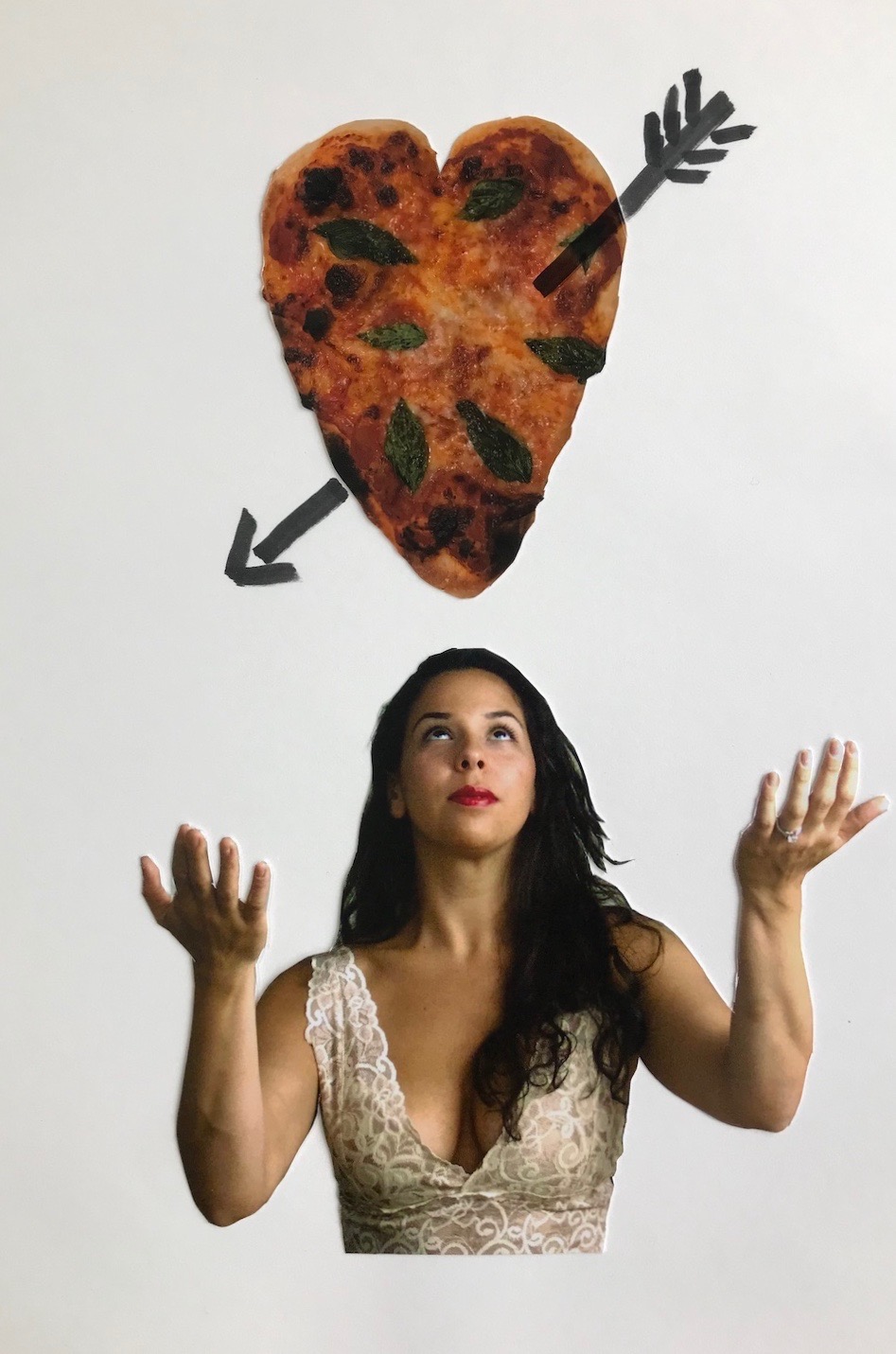
By John Mariani
Cover Art By Galina Dargery

After the July Fourth weekend, the fashion industry went into sleeper mode, and Nicola was enjoying the time off, some of which was used looking for an apartment somewhere around Columbia University.
The neighborhood directly surrounding the huge campus was relatively safe, though above 120th Street or below 110th Street, it would have been inadvisable for a woman alone to take an apartment. But just a block west, right on the Hudson River, Riverside Drive was considered prime real estate, with stately, mansion-like pre-war apartment buildings with doormen and police patrols. These apartments were fairly expensive, but since Nicola had her scholarship and a fine bank account from modeling, there really was nothing to stop her from moving into one of Riverside Drive’s very roomy apartments with that grand view of the Hudson.
She also thought she might move to SoHo, an area in Lower Manhattan that was quickly gentrifying but still offered bargains for large spaces, including lofts. Though not as convenient as Riverside Drive, SoHo seemed a good investment for the future, she was told often, not least by Steven Holtz.
So, when the phone rang two weeks into July and Steven was on the line, Nicola assumed he’d gotten a tip on an apartment near the SNAP offices, which would certainly be convenient for SNAP’s booker.
“Find a great apartment for me, Steven?” asked Nicola.
“No, but if the news I’m about to tell you works out, you’ll be able to buy any condo in New York, Nikki.”
“Meaning what?”
“You sitting down, Nikki? I just got a call from one of the big ad agencies that just got the account for a new Italian make-up and fragrance line called Vivace. The agency convinced them they should break out with a very specific image. Apparently the line is aimed at young women, so they need a young woman as the `Face of Vivace.’ And can you guess who they want to be the `Face,’ Nikki?”
Nicola almost didn’t dare answer, then asked, “Me?”
“Yes, Nikki. You. And do you know what that means?”
“Not really. Tell me.”
“It means that if you become their exclusive icon and spokeswoman, you—and I—will make a lot of money.”
“What’s a lot of money?” Nicola asked, holding her breath.
“If I can't get them to sign a $500,000 contract, I wouldn’t be much of an agent.”
Nicola’s jaw dropped and she had to shake her head to comprehend what Steven had told her.
“Are you kidding me? What do I have to do for that kind of money?”
“It’s a two-year contract and for that you do spring and fall ads, which they repeat throughout the season, like Chanel and Revlon. They may ask you to do some public appearances, open a Vivace counter at Bloomingdale’s or somewhere—for which you’ll be paid extra.”
“But what about my other modeling jobs?”
“Well,” said Steven, “that’s where the exclusivity comes in. They don’t want you appearing in other ads or magazines—although they may allow you to do some of the top fashion mags. They want you, and only you, to be their image because you supposedly represent everything wonderful that Vivace stands for.”
Over the preceding decade, the biggest cosmetics companies had been signing models to such contracts, which had become the gold ring for models. Margaux Hemingway had signed with Fabergé’s Babe perfume, Karen Graham for Estée Lauder, Christina Ferrare for Max Factor, Cheryl Tiegs for CoverGirl, and Shelley Hack for Charlie. And now it looked like Vivace might sign Nicola Santini.
“They like the fact that you have an Italian name,” said Steven, “though they prefer `Nikki’ to Nicola.”
“Jeez,” said Nicola, “For that kind of money they can call me Nuggie for all I care!”
“So you love it?”
“I love it.”
“Okay, I’m going to negotiate with them and get as much money as we can. Make us both a little richer, Nikki. Just don’t lease any apartments yet!”
Nicola promised she wouldn’t and hung up the phone, astonished by all she’d just heard. With such a contract she would have no worries about making money for a long while, and the exclusivity factor meant she would have all the time she needed to pursue her PhD. Once she attained her degree, say, four years from then, she figured her modeling career would be winding down, but if she made wise investments along the way, she could do anything she wanted, including stay in academia, or write books, or whatever, without having to worry about the cost. Why, she might even some day endow a scholarship in her family name at Columbia or another university.
For the moment she was feeling giddy, but before there actually was a contract, she thought it best to stay quiet and allow herself the delirious luxury of day dreaming. For, although she was not the first wealthy woman to get her PhD in art history—indeed, it was something of a social coup—she would most certainly be the first semi-wealthy woman from Belmont to do so.
Nicola didn’t have to keep quiet for long. The next day the phone rang and it was Steven.
“You sitting down, Nikki?”
“What, Steven, what?”
“How does a two-year, half-a-million-dollar contract sound to you?”
The phone on Nicola’s end seemed to have gone dead.
“Nikki? Nikki, you there?”
“I’m here, I’m here. I’m just floored by the news.”
“Well, you’ve earned it, kiddo. Now, listen, before the ad agency signs, they of course want to see you, then we’ll get the contract drawn up pronto. So, Nikki, you ready to become one of the most recognized faces in the world? Billboards? Ads in every fashion mag?”
“I don't know, Steven. I’ll need your help, I guess.”
Steven assured her, “I’ve got your back, Nikki. You’re a very smart girl.”
Nicola got off the phone and went into the bathroom to look in the mirror, praying to God that, please, please, just for twenty-four hours, no zits!
God was good to Nicola Santini that night. Her beautiful complexion was unblemished. The meeting with the ad agency went very well. Two Vivace executives were along and very pleased that Nicola spoke Italian. They said they were ready to move quickly to mount a campaign for the middle of autumn.
She would be photographed by one of the best fashion photographers in the world over a two-day shoot, headshots the first day, some outfits the second. They all shook hands and that was that. Steven would work out the details and get back to everyone.
Now, Nicola said to herself, I can tell everyone the news. First to know was Catherine, who screamed so loudly in her dorm room that some residents asked if she were all right. Catherine said, “Nicky, you are going to be great! I am so happy you are my friend. Wait till I tell everyone around here.”
“Well, don't oversell it,” said Nicola. “I don't want anything to change with my friends.”
The two girls hugged, then Catherine pushed back and said, “Oh, my God, Nicky! I forgot to tell you!”
“Forgot to tell me what?”
“Rhys Shit John!”
“What about him?”
“He was fired from Columbia for sexual harassment of a student. And he’s going through a really messy divorce.”
Nicola gaped, though she’d always thought it would come to this.
“Who was the student?”
“Hold onto your seat, Nick. It was Mercédes!”
“Mercédes! He sexually harassed Mercédes?”
“Well, he tried,” said Catherine, smirking. “But he messed with the wrong Brazilian.”
“How’d she prove it?”
“Well, remember how in freshman year, when her English wasn’t all that great, Mercédes got into the habit of tape recording all her classes? Well, apparently she also recorded all her meetings with professors, so she’d get down exactly what they expected in a paper or exam.”
“So she recorded St. John?” By then Nicola’s shock had given way to laughter.
“That’s our Mercédes. She just marched into the Dean’s office, played the tape, and Sinn Jinn was out the door.”
Nicola shook her head and said, “Did Mercédes give you any details?”
“No, you know how she is, Latina and all that. But whatever happened showed Sinn Jinn at his all-time worst.” “Frankly, I’m sorry about the divorce,” said Nicola, “but if there’s a place in Dante’s Inferno, Rhys St. John should be well on his way there.”
THE WINES OF SEREGO
ALIGHIERI
By Geoff
Kalish
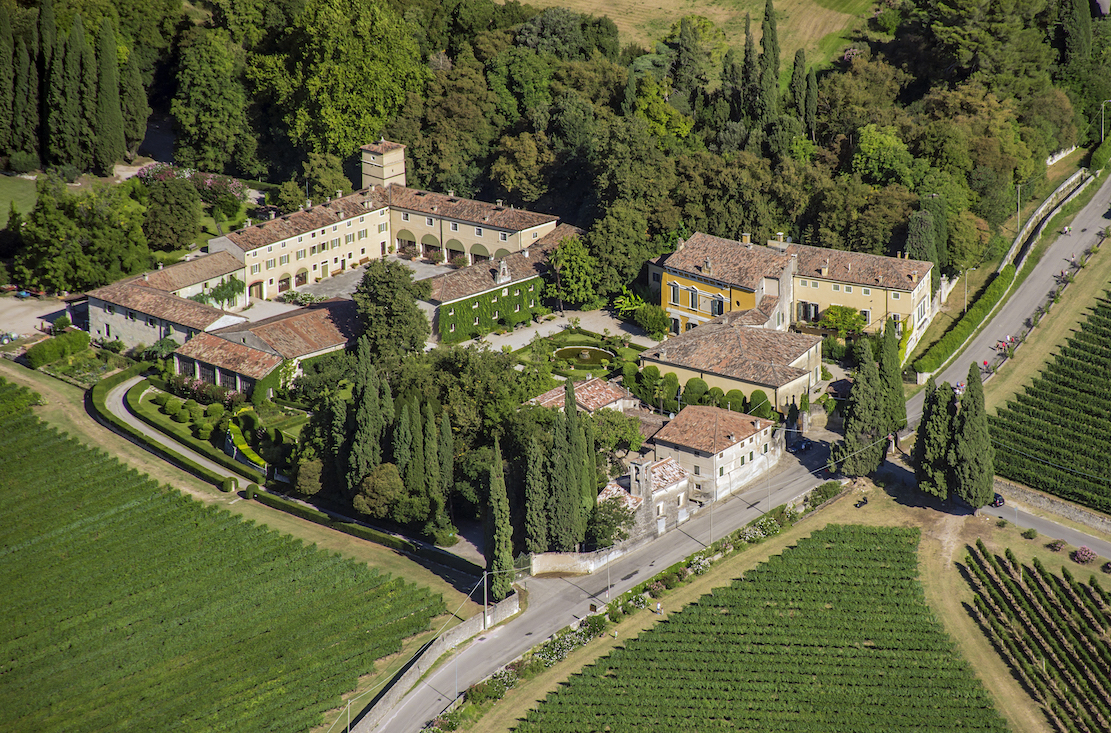
But, first a bit of history of the winery and some remarks about its vinicultural practices. In 1300 Dante Alighieri was exiled from Florence for corruption as the head of the local government. Some 53 years later, his son Pietro purchased a prime vineyard just east of Italy’s Lake Garda in the Valpolicella region. And, now, 21 generations later, wine is still being made from the Serego-Alighieri family vineyard—in cooperation with the Boscani family (owners of Masi Agricola), who provide wine-making and cellaring expertise in general, the winery annually produces about 30,000 cases of wine from the vineyards that encompass about 300 acres on hills composed mainly of red soil that’s rich in limestone and clay. Of note, as much as possible the grape growing and winemaking processes are performed sustainably, with rainwater for irrigation, natural substances for fertilization and natural pesticides. Aging of wines takes place initially in large Slovenian oak barrels and then, rather unique to this winery, in smaller cherry wood casks. All wines are filtered prior to bottling.
Now for the wines. Five of those currently produced were tasted, and overall they were excellent, with long-lasting flavors that mated well with a variety of fare, and importantly they were well-priced in relation to their quality.
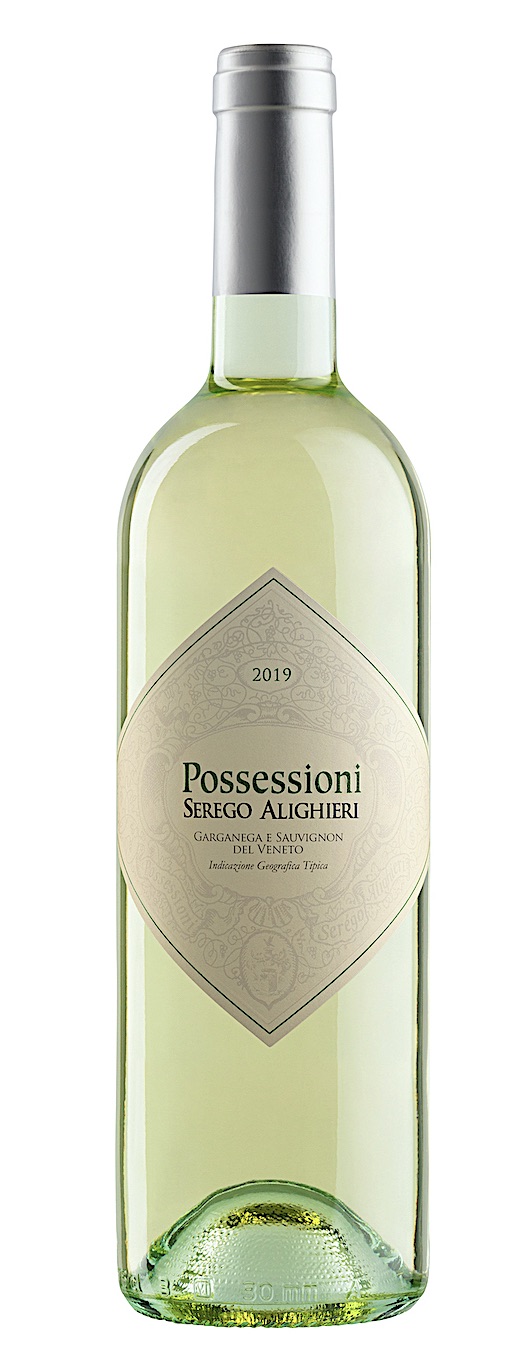 The
2019 Possessioni Garganega e Sauvignon
del Veneto IGT ($12) , made from
a blend of Garganega (75%) and Sauvignon Blanc
(25%), was an easy drinking white with a
bouquet and taste of pears and melons with a
touch of grapefruit in its finish, like a
toned-down New Zealand Sauvignon Blanc. It
made a great mate for scallops, shrimp and
grilled orate (gilt-head sea bream).
The
2019 Possessioni Garganega e Sauvignon
del Veneto IGT ($12) , made from
a blend of Garganega (75%) and Sauvignon Blanc
(25%), was an easy drinking white with a
bouquet and taste of pears and melons with a
touch of grapefruit in its finish, like a
toned-down New Zealand Sauvignon Blanc. It
made a great mate for scallops, shrimp and
grilled orate (gilt-head sea bream).
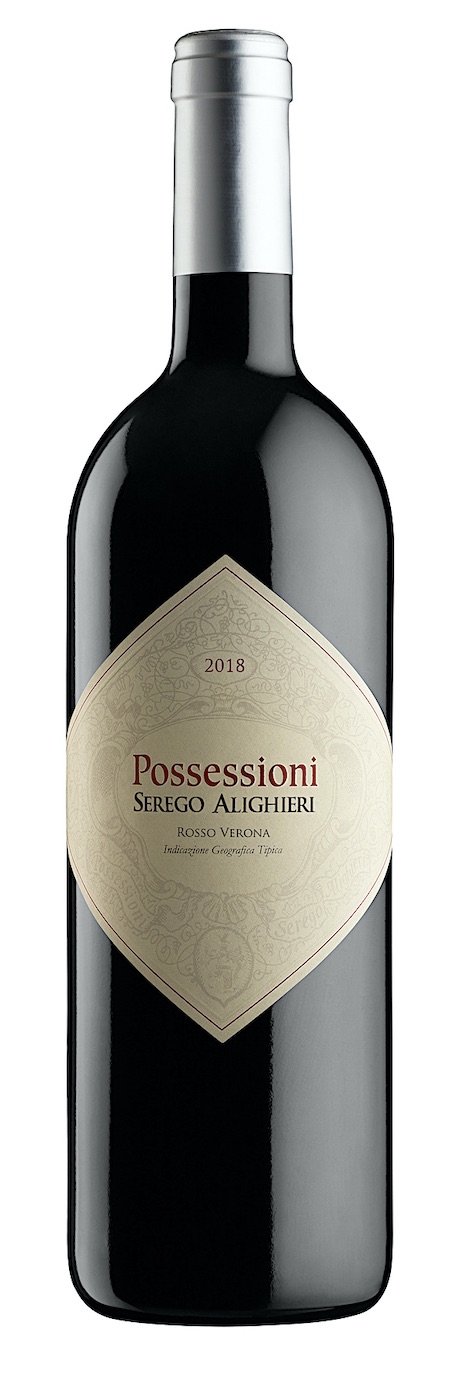 and Molinara (Serego Alighieri
clone) grapes and showed a bouquet and
straightforward taste of plums and cherries,
well suited to match hamburgers or
pizza.
and Molinara (Serego Alighieri
clone) grapes and showed a bouquet and
straightforward taste of plums and cherries,
well suited to match hamburgers or
pizza.
The 2017
Monte Piazzo Valpolicella Classico
Superiore DOC ($26)
was also made from a blend of Corvina,
Rondinella and Molinara grapes is a cut or
two above the typical Valpolicella seen on
shop shelves. It had a bouquet and taste of
ripe plums, cherries and a dry, slightly
tannic finish that married well with veal
Marsala,
lamb chops or pasta with red sauce.
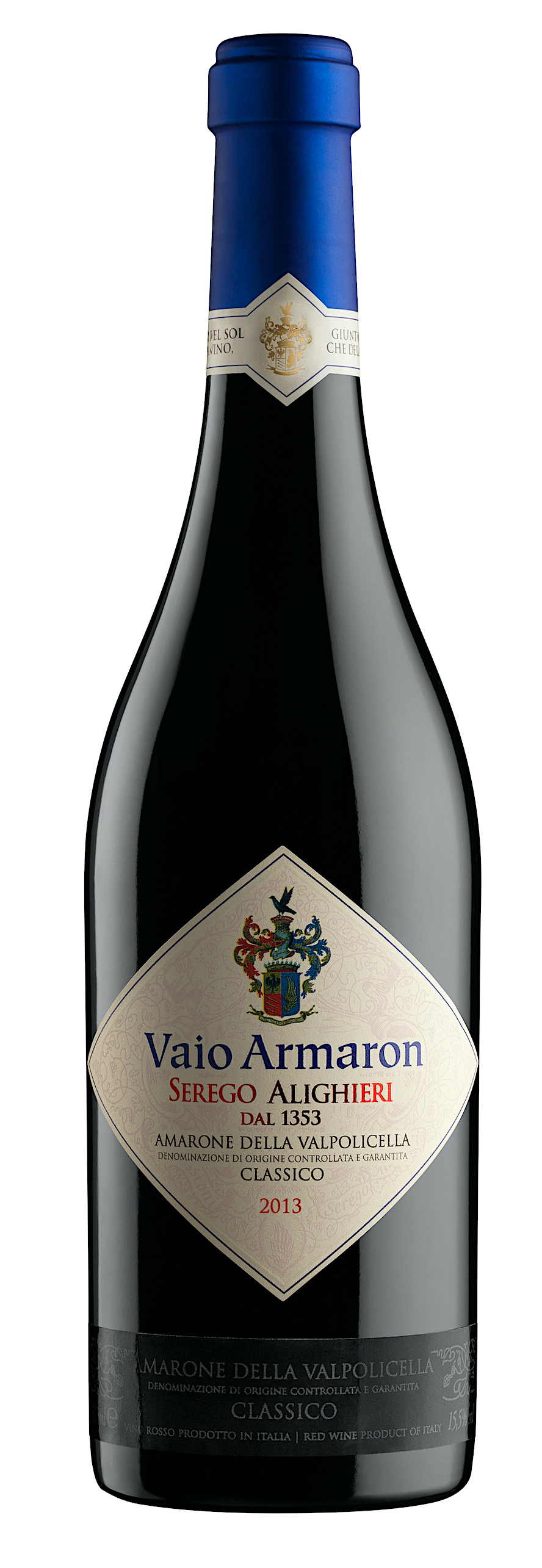 The 2013 Vaio
Amaron Amarone Della Valpolicella Classico
DOCG ($67), with an alcohol
content of 15.5%, was a bargain compared with
the many over-priced, high alcohol Amarones
around now. It was made by the traditional
method of using a blend of Corvina, Rondinella
and Molinara grapes that following harvest
were allowed to dry for 3-4 months on bamboo
trays before being fermented to full dryness.
The wine showed a bouquet and taste of dried
plums, mocha, cassis and hints of cherry and
licorice in its long, memorable finish. It
made excellent accompaniment for duck breast,
turkey or grilled steak .
The 2013 Vaio
Amaron Amarone Della Valpolicella Classico
DOCG ($67), with an alcohol
content of 15.5%, was a bargain compared with
the many over-priced, high alcohol Amarones
around now. It was made by the traditional
method of using a blend of Corvina, Rondinella
and Molinara grapes that following harvest
were allowed to dry for 3-4 months on bamboo
trays before being fermented to full dryness.
The wine showed a bouquet and taste of dried
plums, mocha, cassis and hints of cherry and
licorice in its long, memorable finish. It
made excellent accompaniment for duck breast,
turkey or grilled steak .
And the n.v Casa dei Ronchi Recioto della Valpolicella Classico DOCG ($65 for a 500 ml bottle), also produced from a Blend of Corvina, Rondinella and Molinara grapes that following harvest were allowed to dry on bamboo for 3-4 months and then fermented, with fermentation stopped to allow the wine to retain some sweetness. It had an intense bouquet and taste of ripe cherries and walnuts and a slightly sweet finish with notes of plum jam and exotic spices. It paired perfectly with aged cheddar, biscotti, even baked apples.
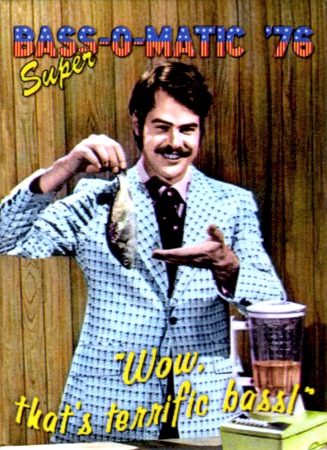
WHAT A REFRESHING
THOUGHT!
YET ANOTHER REASON WE DON'T READ YELP REVIEWS
.jpg)
According
to Yelp ratings, using "data
science team also balanced geographic
representation by including an equal share of
submissions from different regions of the
country," The NUMBER ONE restaurant in the USA is
the vegan #1 Kelley Farm Kitchen
(Harpers Ferry, West Virginia).
❖❖❖
Sponsored by

Any of John Mariani's books below may be ordered from amazon.com.
 The Hound in Heaven
(21st Century Lion Books) is a novella, and
for anyone who loves dogs, Christmas, romance,
inspiration, even the supernatural, I hope you'll find
this to be a treasured favorite. The story
concerns how, after a New England teacher, his wife and
their two daughters adopt a stray puppy found in their
barn in northern Maine, their lives seem full of promise.
But when tragedy strikes, their wonderful dog Lazarus and
the spirit of Christmas are the only things that may bring
his master back from the edge of despair.
The Hound in Heaven
(21st Century Lion Books) is a novella, and
for anyone who loves dogs, Christmas, romance,
inspiration, even the supernatural, I hope you'll find
this to be a treasured favorite. The story
concerns how, after a New England teacher, his wife and
their two daughters adopt a stray puppy found in their
barn in northern Maine, their lives seem full of promise.
But when tragedy strikes, their wonderful dog Lazarus and
the spirit of Christmas are the only things that may bring
his master back from the edge of despair. WATCH THE VIDEO!
“What a huge surprise turn this story took! I was completely stunned! I truly enjoyed this book and its message.” – Actress Ali MacGraw
“He had me at Page One. The amount of heart, human insight, soul searching, and deft literary strength that John Mariani pours into this airtight novella is vertigo-inducing. Perhaps ‘wow’ would be the best comment.” – James Dalessandro, author of Bohemian Heart and 1906.
“John Mariani’s Hound in Heaven starts with a well-painted portrayal of an American family, along with the requisite dog. A surprise event flips the action of the novel and captures us for a voyage leading to a hopeful and heart-warming message. A page turning, one sitting read, it’s the perfect antidote for the winter and promotion of holiday celebration.” – Ann Pearlman, author of The Christmas Cookie Club and A Gift for my Sister.
“John Mariani’s concise, achingly beautiful novella pulls a literary rabbit out of a hat – a mash-up of the cosmic and the intimate, the tragic and the heart-warming – a Christmas tale for all ages, and all faiths. Read it to your children, read it to yourself… but read it. Early and often. Highly recommended.” – Jay Bonansinga, New York Times bestselling author of Pinkerton’s War, The Sinking of The Eastland, and The Walking Dead: The Road To Woodbury.
“Amazing things happen when you open your heart to an animal. The Hound in Heaven delivers a powerful story of healing that is forged in the spiritual relationship between a man and his best friend. The book brings a message of hope that can enrich our images of family, love, and loss.” – Dr. Barbara Royal, author of The Royal Treatment.
 |
The Encyclopedia of American Food and Drink by John F. Mariani (Bloomsbury USA, $35) Modesty forbids me to praise my own new book, but let me proudly say that it is an extensive revision of the 4th edition that appeared more than a decade ago, before locavores, molecular cuisine, modernist cuisine, the Food Network and so much more, now included. Word origins have been completely updated, as have per capita consumption and production stats. Most important, for the first time since publication in the 1980s, the book includes more than 100 biographies of Americans who have changed the way we cook, eat and drink -- from Fannie Farmer and Julia Child to Robert Mondavi and Thomas Keller. "This book is amazing! It has entries for everything from `abalone' to `zwieback,' plus more than 500 recipes for classic American dishes and drinks."--Devra First, The Boston Globe. "Much needed in any kitchen library."--Bon Appetit. |
"Eating Italian will never be the same after reading John Mariani's entertaining and savory gastronomical history of the cuisine of Italy and how it won over appetites worldwide. . . . This book is such a tasteful narrative that it will literally make you hungry for Italian food and arouse your appetite for gastronomical history."--Don Oldenburg, USA Today. "Italian
restaurants--some good, some glitzy--far
outnumber their French rivals. Many of
these establishments are zestfully described
in How Italian Food Conquered the World, an
entertaining and fact-filled chronicle by
food-and-wine correspondent John F.
Mariani."--Aram Bakshian Jr., Wall Street
Journal.
"Equal parts
history, sociology, gastronomy, and just
plain fun, How Italian Food Conquered the
World tells the captivating and delicious
story of the (let's face it) everybody's
favorite cuisine with clarity, verve and
more than one surprise."--Colman Andrews,
editorial director of The Daily
Meal.com. "A fantastic and fascinating
read, covering everything from the influence
of Venice's spice trade to the impact of
Italian immigrants in America and the
evolution of alta cucina. This book will
serve as a terrific resource to anyone
interested in the real story of Italian
food."--Mary Ann Esposito, host of PBS-TV's
Ciao
Italia. "John Mariani has written the
definitive history of how Italians won their
way into our hearts, minds, and
stomachs. It's a story of pleasure over
pomp and taste over technique."--Danny Meyer,
owner of NYC restaurants Union Square
Cafe, The Modern, and Maialino.
|
 |
 |
 |
 |
 |
 |
 |
 |
 Everett Potter's Travel Report:
Everett Potter's Travel Report: 
 Eating Las
Vegas JOHN CURTAS has been covering
the Las Vegas food and restaurant scene
since 1995. He is the co-author of EATING LAS
VEGAS – The 50 Essential Restaurants (as
well as the author of the Eating Las
Vegas web site: www.eatinglasvegas.
He can also be seen every Friday morning as
the “resident foodie” for Wake Up With the
Wagners on KSNV TV (NBC) Channel 3 in
Las Vegas.
Eating Las
Vegas JOHN CURTAS has been covering
the Las Vegas food and restaurant scene
since 1995. He is the co-author of EATING LAS
VEGAS – The 50 Essential Restaurants (as
well as the author of the Eating Las
Vegas web site: www.eatinglasvegas.
He can also be seen every Friday morning as
the “resident foodie” for Wake Up With the
Wagners on KSNV TV (NBC) Channel 3 in
Las Vegas.
MARIANI'S VIRTUAL GOURMET
NEWSLETTER is published weekly. Publisher: John Mariani. Editor: Walter Bagley. Contributing Writers: Christopher Mariani,
Robert Mariani, Misha Mariani, John A. Curtas, Gerry Dawes, Geoff Kalish,
and Brian Freedman. Contributing
Photographer: Galina Dargery. Technical
Advisor: Gerry
McLoughlin.
If you wish to subscribe to this
newsletter, please click here: http://www.johnmariani.com/subscribe/index.html
© copyright John Mariani 2021


